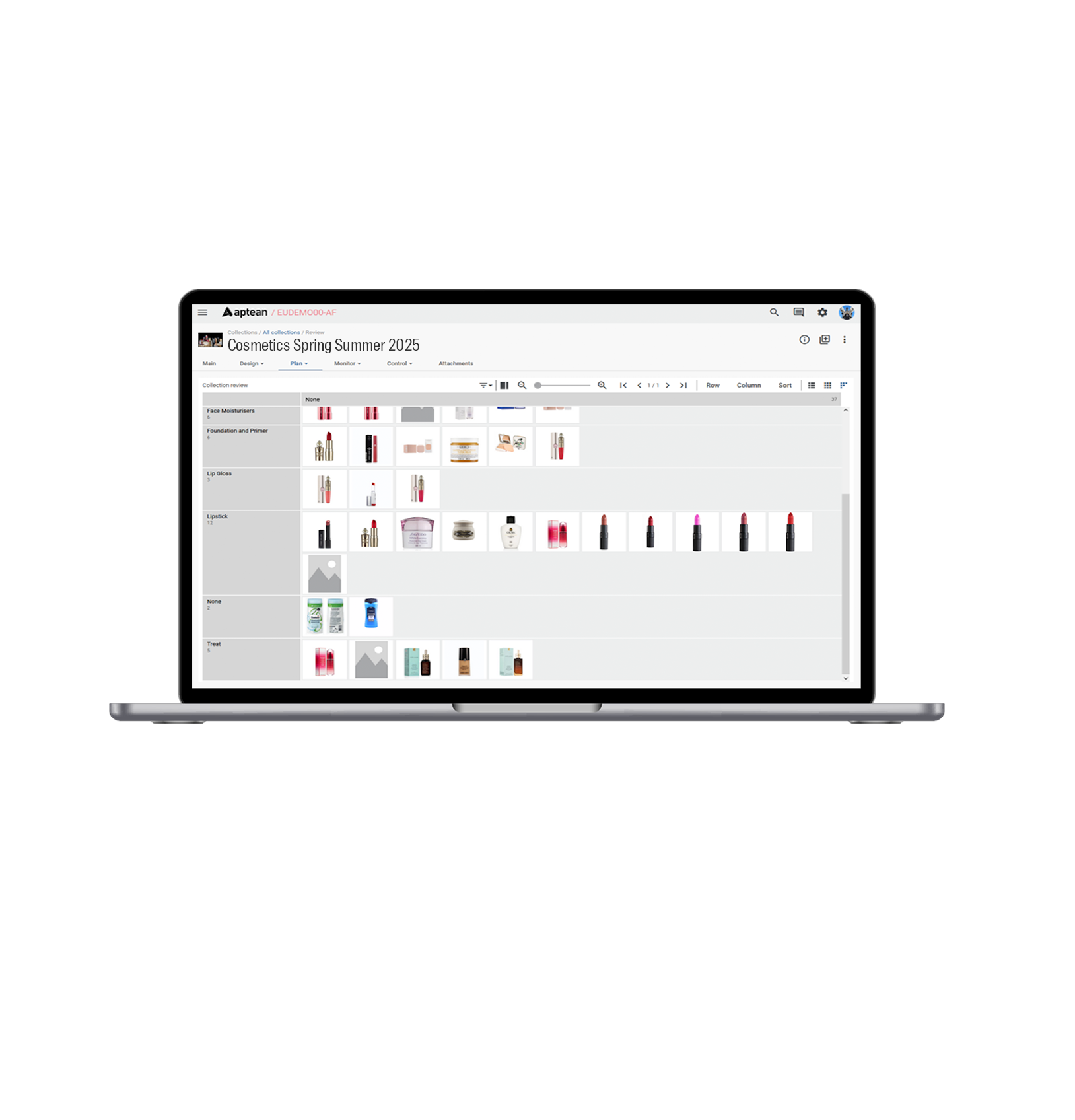Destacado en este post
The Benefits of Cloud-Based PLM Software
The Benefits of Cloud-Based PLM Software
13 Dic 2023
 John McCurdy | Senior Content Writer, Marketing
John McCurdy | Senior Content Writer, Marketing
From their humble beginnings just before the dawn of the 21st century, product lifecycle management (PLM) systems have steadily risen in popularity to become the go-to solution for the management and execution of new product development (NPD) projects.
By providing a wide variety of features that streamline ideation, testing, finalization and launch—while also serving as an organization-wide “single source of truth” for process and product data—PLM software is now a must-have for modern manufacturers to stay competitive and relevant in dynamic markets.
Keep in mind that with the proliferation of brands and their many offerings, today’s consumers have plenty of options. They expect the businesses that they buy from to improve products over time and innovate, and that’s accelerated the design cycle to a rapid cadence—making the benefits of PLM software even more appealing.
Of course, as time has marched onward, technology has advanced too. Cloud computing is without a doubt one of the most significant developments on this front, and, with digital transformation and scalability on everyone's mind, now is the time for your business to consider a PLM in the cloud.
In this post, we'll explore how cloud product lifecycle management delivers additional benefits throughout your operation, from increased collaboration to enhanced cybersecurity. Along the way, we'll also provide some sample scenarios to demonstrate the difference it makes in NPD.
1. Facilitated Collaboration for NPD Projects
You know well that NPD projects are all-hands-on-deck endeavors. Each requires joint effort from and free communication between a number of teams, including research and development; procurement; marketing; compliance; finance; and more. There are also many critical data elements in play, including specifications for components and exacting parameters for finished goods, which means that accuracy and accessibility of information is critical for keeping everyone on the same page.
Cloud PLM software makes cohesive NPD possible by acting as a single unified platform that can be accessed from anywhere and at any time by all staff involved in your projects. All they need is an internet connection and a browser, and they can view and manipulate data as necessary; manage documents digitally; and conduct critical steps in the process together in real time.
To understand the value of this aspect of cloud-based PLM solutions, consider the case of a personal care manufacturer that is developing a new sunscreen to be launched in time for summer. The involved teams are on a tight schedule, but because the business has a cloud PLM, they don't need to stay tethered to a physical workstation or use a VPN to log in to the system, and they can access the solution via mobile with ease.
2. Reduced Hardware and IT Requirements
Business decision-makers are sometimes reluctant to add new platforms based on the assumption that the implementation would necessitate investing in a new physical server or virtual machine (VM), server room climate conditioning or reallocating IT specialists for maintenance of the system. Cloud PLM solutions don’t require additional hardware, server room upgrades or in-house technical support, as those considerations are taken care of by the provider.
The servers that host cloud-based PLM software are remote and maintained by the vendor’s IT team, the members of which are specially trained to optimally monitor customers’ instances of the system. This helps promote a lower total cost of ownership (TCO) for the PLM, as no financial resources need to be committed to new hardware, facility enhancements or additional IT hires.
Imagine a growing apparel manufacturer with a tech stack that’s been added to over time to include solutions for enterprise resource planning (ERP), shop floor control (SFC) and now PLM. They don’t have the space for another on-site server, nor the financial resources to bring on more IT personnel or build out a server room. But by choosing a cloud setup, the company can avoid those concerns altogether and move forward.
3. Simplified Implementation and Upgrade Processes
Another benefit of deploying your PLM from the cloud that goes hand-in-hand with the advantages discussed above is a streamlined, lightweight implementation. Since you don’t need to add to your hardware setup or headcount, you just work with your provider to understand the system and equip your employees with the knowledge they need, and the vendor flips the proverbial switch to go live.
Along the same lines, cloud-based PLM software is also easier to upgrade, as your provider handles those procedures remotely. Whether you’re adding on additional modules or functionalities, or simply stepping up to the latest version, the fact that the vendor takes care of it all behind the scenes means that your business won’t have to deal with unplanned downtime and can realize benefits sooner.
Think of a start-up beverage producer known for its fun innovations in flavor and marketing. The company needs to get a PLM up and running as soon as possible to support the strategy of developing multiple new offerings every year and strategically timing their releases, so leadership chooses a cloud-based model for a quick, hassle-free deployment.
4. Enhanced Cybersecurity for Proprietary Information
Products—and the exacting details behind their creation—are the lifeblood of your manufacturing business. In fact, they’re so precious that you may need to keep the specifics on formulas, bills of materials (BOMs) and production processes confidential, as a competitor obtaining that sensitive information could lead to the launch of a similar item that could eat into your market share.
Opting for a cloud implementation of your PLM can cover this consideration, as any software supplier worth considering will have strong data management and cybersecurity measures in place for all servers and customer data. The best providers also use end-to-end penetration testing to identify weaknesses in the system’s infrastructure and technology to combat distributed denial of service (DDoS) attacks.
To understand the significance of this benefit, take the case of a cosmetics manufacturer that has developed a matte lipstick that actually moisturizes the lips rather than drying them out. This is an exciting new item that the brand wants to keep out of rivals’ hands—so the company’s teams manage all related information and processes via a cloud PLM, and that’s never an issue.
5. Better Scalability for Business Growth
One of the major goals of your NPD efforts, alongside promoting profitability and remaining relevant in the market, is to expand your product suite and tap into markets that your company doesn’t currently reach. Of course, that often comes with bringing on new staff, purchasing new equipment and even physically expanding or opening new facilities.
That means that you need business software that scales for new lines, locations, users and customers, as well as volume of raw materials and finished goods. Cloud-based PLM systems offer that flexibility, as both the software and the hardware are the responsibility of the provider, and your organization just needs to work with the supplier to implement the solution at the right level and depth.
Say there’s a rising frozen novelty manufacturer that's capitalizing on the consumer trend for healthier, but still delicious, ice creams. Increased demand from skyrocketing popularity prompts the opening of new facilities, and thanks to the company choosing a cloud PLM, leadership simply has to contact the provider, purchase new licenses as necessary and then have the system “turned on” where it’s needed.
Consider a Complete Cloud-Based Suite From Aptean
If these benefits of cloud deployment for your PLM system have enticed you, there’s good news—other manufacturing business solutions can also be implemented via the cloud to multiply your advantages. What’s more, there are outstanding software providers that offer several cloud software solutions, which means you can choose a single supplier for all your needs.
Aptean is one such supplier, but we’re also more than that. We pride ourselves on being a long-term partner for every customer, and our team has best practice knowledge that helps produce mutual success from collective decades of experience in our target markets.
Speaking of, we serve a wide range of industries with purpose-built PLM software, including the food, beverage, cosmetics, personal care and apparel spaces, among others. And there are numerous success stories that demonstrate the positive impact that our systems can have on a business.
Choosing Aptean as your solution provider means working with a recognized leader, as we ranked in the top 10% of companies included in the Software Report’s Power 500 Software Companies. It's also your first step in holistic, cloud-based digital transformation.
Ready to learn more about cloud PLM solutions and how to find the right one for your manufacturing business? Check out our how-to on comparing different PLM solutions, or our step-by-step guide to PLM software selection.
¿Todo listo para transformar tu negocio?
Comienza tu transformación con Aptean PLM para empresas de cosméticos y cuidado personal.



